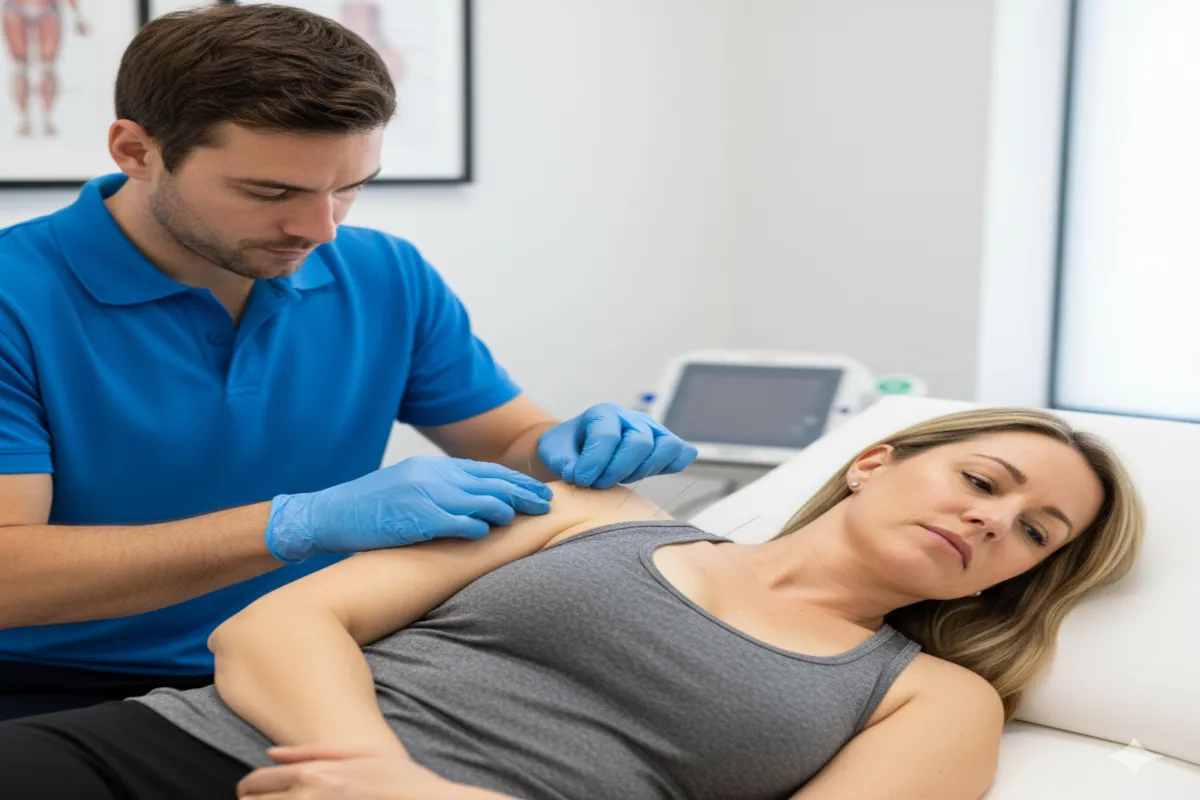
How Dry Needling Enhances Physical Therapy Outcomes
When it comes to modern rehabilitation, physical therapy and dry needling make a powerful combination. While physical therapy focuses on restoring movement, strength, and function, dry needling targets deep muscle tension and trigger points that may limit progress or cause lingering pain.
At NJ Rehab Experts, our licensed physical therapists integrate dry needling into personalized treatment plans to help patients recover faster, reduce pain, and improve performance. Let’s explore how this innovative technique enhances the results of traditional physical therapy.
What Is Dry Needling?
Dry needling is a therapeutic technique where a certified physical therapist inserts fine, sterile needles into tight muscle bands (trigger points) to relieve tension, improve blood flow, and reduce pain.
Unlike acupuncture, which is based on traditional Chinese medicine, dry needling is rooted in Western anatomy and neuroscience. It specifically targets muscle dysfunction and neuromuscular pain patterns.
The Science Behind Dry Needling
When a needle stimulates a trigger point, it creates a localized twitch response — a brief contraction that resets muscle tone and increases oxygen circulation. This helps release knots, decrease inflammation, and restore normal muscle activity.
The Role of Dry Needling in Physical Therapy
Physical therapy often includes stretching, strengthening, joint mobilization, and posture correction. However, if underlying muscle tension or trigger points remain untreated, progress may be slower or incomplete.
That’s where dry needling bridges the gap.
By targeting specific muscles that are tight or overactive, dry needling:
Releases myofascial restrictions that limit flexibility
Improves blood flow and nutrient delivery
Reduces pain signals from hypersensitive nerves
Enhances movement efficiency during exercise and rehabilitation
This synergy between manual therapy, exercise, and dry needling helps patients achieve faster, longer-lasting results.

Common Conditions Treated with Dry Needling
Dry needling can benefit a wide range of musculoskeletal and neuromuscular conditions, including:
Chronic neck and back pain
Shoulder tension and rotator cuff injuries
Sciatica and lower back pain
Knee and hip pain
Tennis or golfer’s elbow
Plantar fasciitis and Achilles tendinitis
Headaches and jaw (TMJ) pain
Postural muscle tension
For athletes or active individuals, dry needling is also an excellent recovery tool to prevent injuries and enhance performance.
How Dry Needling Enhances Physical Therapy Outcomes
Accelerates Pain Relief
Muscle tightness and trigger points can delay recovery, even with consistent therapy. Dry needling helps deactivate those pain sources quickly, allowing you to tolerate more movement and exercise during sessions.
By reducing muscle tension, it also lowers dependency on pain medication and speeds up functional recovery.
Improves Range of Motion and Flexibility
When tight muscles restrict movement, it becomes difficult to perform exercises correctly.
Dry needling restores normal muscle length, making it easier for your body to move efficiently.
Patients often notice immediate improvements in range of motion — especially in the shoulders, hips, and neck — after just a few sessions.
Enhances Muscle Activation
Injured or overworked muscles can become “shut down,” reducing performance and stability.
Dry needling stimulates muscle fibers and reactivates proper contraction patterns, helping you rebuild strength faster through targeted exercises.
This improved neuromuscular coordination helps prevent future injuries and compensations.
Reduces Inflammation and Promotes Healing
By improving local blood circulation, dry needling enhances tissue oxygenation and removes waste buildup that contributes to pain and stiffness.
It also triggers a mild healing response — promoting collagen repair and muscle recovery at a cellular level.
When combined with physical therapy modalities like heat therapy, stretching, and mobilization, it creates an optimal environment for healing.
Boosts Overall Therapy Effectiveness
When used alongside exercise therapy, manual therapy, and posture training, dry needling helps break through recovery plateaus.
Patients often find they can progress faster through their physical therapy program — with improved comfort, mobility, and confidence.
What to Expect During a Dry Needling Session
At NJ Rehab Experts, each dry needling session is performed by a certified physical therapist who carefully evaluates your symptoms, pain patterns, and muscle function.
Here’s what a typical session looks like:
Assessment: The therapist identifies trigger points and areas of muscle tightness.
Insertion: Fine needles are gently inserted into targeted muscles.
Twitch Response: A brief, involuntary muscle contraction may occur, releasing tension.
Aftercare: Mild soreness (like post-exercise soreness) may occur for 24–48 hours as muscles relax and heal.
Sessions are typically combined with stretching, strengthening, or manual therapy for best results.
Is Dry Needling Safe?
Yes — when performed by a trained and licensed professional, dry needling is safe and effective.
Common side effects are minor and temporary, such as mild soreness or redness at the needle site.
At NJ Rehab Experts, our team follows strict hygiene protocols and uses sterile, single-use needles to ensure complete safety and comfort.
Who Can Benefit from Dry Needling in Physical Therapy?
You may benefit from dry needling if you experience:
Persistent muscle tightness or spasms
Chronic or acute musculoskeletal pain
Restricted movement after injury or surgery
Muscle imbalances or poor posture
Sports-related fatigue or stiffness
Whether you’re an athlete, office worker, or recovering patient, dry needling can help restore muscle balance and optimize therapy results.
Why Choose NJ Rehab Experts for Dry Needling
At NJ Rehab Experts, our physical therapists specialize in integrating dry needling with comprehensive rehabilitation programs.
Our approach focuses on:
Personalized care plans based on your condition
Evidence-based dry needling techniques
State-of-the-art physical therapy methods
Education and guidance for long-term results
Our goal is to help you recover faster, move better, and live pain-free — one session at a time.
Visit: https://njrehabexperts.com/
Call: (212) 227-3233
Email: [email protected]
